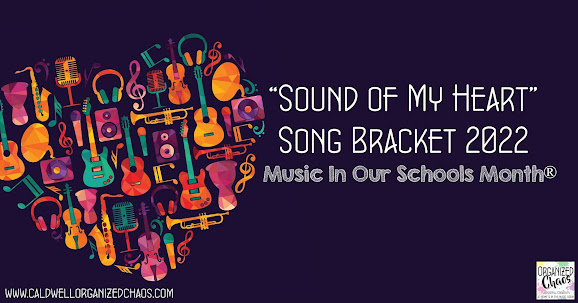Over the last several years I've been working with local hip-hop artists and hip-hop educators to learn how to appropriately and effectively incorporate hip-hop into my music lessons. While I still have a lot to learn and I am by no means an expert on the topic, I have found some excellent resources by people who are. Today I'm sharing my favorite teaching ideas and resources for developing rap skills in elementary music.
It's important to note, as always, the importance of context. The idea of having elementary students "write their own raps", or rap a storybook to a beat, seems to have risen in popularity over the last few years. But for the most part, those lessons pull the element of rapping entirely out of the broader context of hip-hop music and make the lesson inauthentic at best. When students are learning how to rap, they should have a basic understanding of what that means- what they're participating in. One aspect of providing that context is introducing students to the historical and cultural context of hip-hop as a whole, including introducing students to all of the elements of hip-hop, not just rapping. I shared my favorite lesson ideas and resources for doing so in the linked posts above.
1. MC vs Rapper
The other aspect of providing appropriate context for rapping is to develop a holistic understanding of what an MC is, and how an MC is more than a "rapper". Here are a few videos of artists explaining the difference in their own words- I don't necessarily recommend showing these clips to students, though you could- I prefer to use them (along with my own personal conversations I've had with hip-hop artists and educators) to educate myself and in turn, make sure I am discussing and explaining that difference to my students and being careful in how I use the 2 terms. This one is Ice-T, and this longer one is KRS 1.
2. Rudiments
Little Kids Rock has put out some great rapping exercise videos that are perfect to use as warmups and practice with over and over, gradually building from the fundamentals to the more complex. This playlist includes lots of warmup exercises that you can show the whole class and follow along with, as well as tracks you can use to let students practice those same skills on their own. The tracks are also great to use for other rap exercises so they're good ones to save!
3. Flow
The rudiment exercise videos are the most basic way to start developing flow, but once students get the hang of those fundamentals, my favorite activities for working on developing flow are Tag Sounds and Scat-a-Rapping. They're similar in the sense that they both encourage students to focus on the rhythm rather than the words first, which is so important for developing flow. Along with the rudiment exercises, I like to use these at the beginning of class to get the class warmed up and "in the flow". The more they practice it, the easier it will become and the more students will start to develop their own unique style and get comfortable with their signature flow.
4. Rhyming
Music teachers and students alike often try to skip over the previous 2 steps and go straight to writing and/or speaking rhyming lines. I've learned that this is not the best approach because rhyming is definitely secondary to flow in actual rapping! But once they are starting to get comfortable rapping with the flow and they are ready to start adding words, the End Rhymes Game is a great way to get kids to think about rhyming words and get them started on ideas for their own raps.
5. Writing
You'll notice I put writing WAAAAAAY at the end, after students have spent a lot of time improvising and actually performing. I've found there is no way to really skip the other part and go straight to asking kids to "write raps" before they have an understanding of how words need to flow with the beat in order to truly develop actual rap skills (as opposed to, really, just chanting arbitrary stuff on a steady beat which is what most of those isolated "rap lessons" end up being).
I've found it works well to spend some focused time on those initial fundamentals developing flow through those rap exercises, then continue to use those at the beginning of the lesson each time before having kids sit down to write- it really helps to get the ideas going and avoid writer's block. When they first start writing, it's good to give them time to brain dump/ free write about whatever comes to mind, then ask them to see if they can find a word or phrase they want to use as a jumping off point for a verse. While we don't always have enough of it, time is the most important key to success in developing students' rap writing skills. They need time to jot down stream of consciousness thoughts, pull out things they like and develop them into lines, go back to the beat and make sure it flows, think about rhyming, etc and adjust it until they get something that they truly are happy with. Whenever they're writing, play the track they are going to be rapping it with in the background so they can test it out as they go.
Obviously there are a lot of ways to develop this further, but those are my favorite ideas and resources for introducing rapping to elementary students. If you have other ideas you've used successfully in your classroom I'd love to hear them in the comments, and if you haven't already, please do go back to my previous posts on hip-hop that I mentioned at the beginning of this post to find more important resources for teaching hip-hop!













